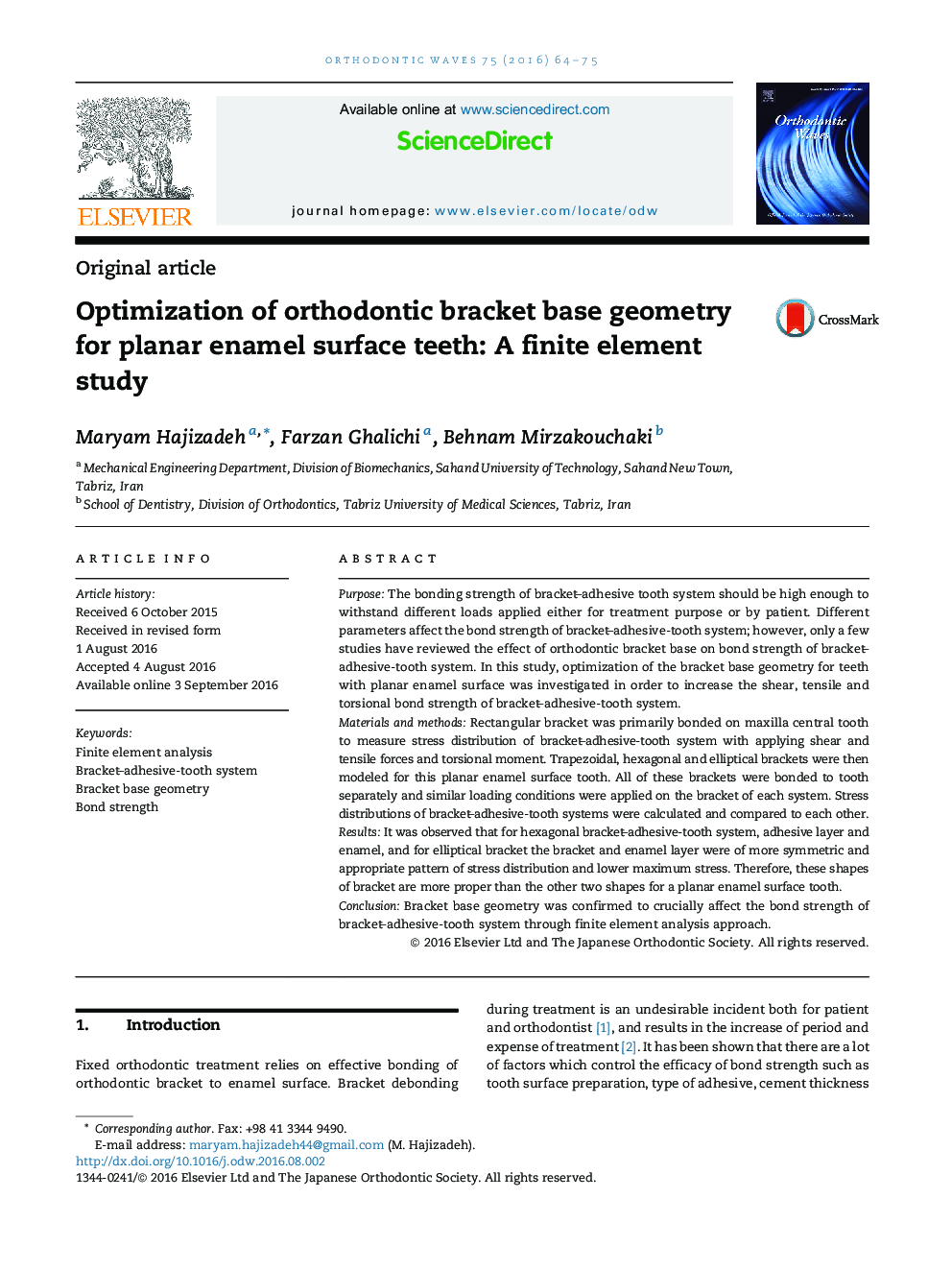| Article ID | Journal | Published Year | Pages | File Type |
|---|---|---|---|---|
| 3170250 | Orthodontic Waves | 2016 | 12 Pages |
PurposeThe bonding strength of bracket–adhesive tooth system should be high enough to withstand different loads applied either for treatment purpose or by patient. Different parameters affect the bond strength of bracket–adhesive-tooth system; however, only a few studies have reviewed the effect of orthodontic bracket base on bond strength of bracket–adhesive-tooth system. In this study, optimization of the bracket base geometry for teeth with planar enamel surface was investigated in order to increase the shear, tensile and torsional bond strength of bracket–adhesive-tooth system.Materials and methodsRectangular bracket was primarily bonded on maxilla central tooth to measure stress distribution of bracket–adhesive-tooth system with applying shear and tensile forces and torsional moment. Trapezoidal, hexagonal and elliptical brackets were then modeled for this planar enamel surface tooth. All of these brackets were bonded to tooth separately and similar loading conditions were applied on the bracket of each system. Stress distributions of bracket–adhesive-tooth systems were calculated and compared to each other.ResultsIt was observed that for hexagonal bracket–adhesive-tooth system, adhesive layer and enamel, and for elliptical bracket the bracket and enamel layer were of more symmetric and appropriate pattern of stress distribution and lower maximum stress. Therefore, these shapes of bracket are more proper than the other two shapes for a planar enamel surface tooth.ConclusionBracket base geometry was confirmed to crucially affect the bond strength of bracket–adhesive-tooth system through finite element analysis approach.
